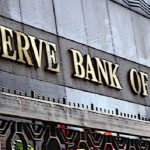 Zimbabwe Finance Minister Mthuli Ncube today said the country is going to legislate the use of the United States dollar for the five years covering the National Development Strategy Phase One which kicked off last year and runs up to 2025.
Zimbabwe Finance Minister Mthuli Ncube today said the country is going to legislate the use of the United States dollar for the five years covering the National Development Strategy Phase One which kicked off last year and runs up to 2025.
This was one of the raft of measures the minister announced to try and shore up the local currency, stabililise prices and curb inflation which shot up from 131.7% in May to 191.6% this month.
Financial news website, NewZWire, said the statement by Ncube today provided no new shocks but no confidence measures either.
There were no major changes in currency policy in a statement released by Finance Minister Mthuli Ncube, it said. Here is NewZwire key points from the statement>
Ncube stayed away from major policy shifts, but his statement brought no new measure to restore the confidence that he admits is lacking in the market.
Main points:
- No change to the multicurrency system
- Interest rates up from 80% to 200%
- There will be no price controls
- Removal of levy on diesel, and a cut on petrol levy
On the exchange rate
The multicurrency system currently in place, where the USD and the Zimdollars are legal tender, is staying. The only change is that it is being put into law so that it continues for at least the remainder of the five-year period covered by NDS1, government’s economic blueprint.
Explaining why this is necessary, Treasury Secretary George Guvamatanga gave the example of banks; while they have USD deposits, they are reluctant to lend because they fear that, down the road, those they lend to will be able to pay back in Zimdollars. He says they need a law to give them assurances, so that they can lend and increase USD loans.
The coming SI will make it law to use the interbank exchange rate, which is still much lower than the more widely used parallel market rate.
On whether Zimbabwe should fully dollarise, Guvamatanga argued that there aren’t enough US dollars in the market to do so.
On fuel
Levies on diesel have been removed on diesel and lowered to 4.7% on petrol. According to Ncube, this move on levies is what prevented fuel prices going above US$2 per litre in the last price increase. He says fuel blending will continue, and insists it helps keep prices down.
Continued next page
(490 VIEWS)

